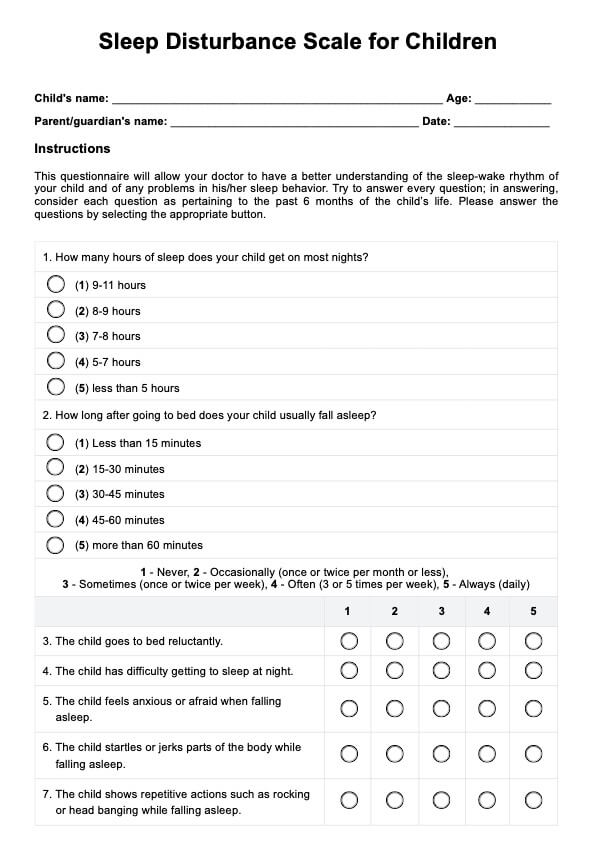To fix sleep disruption, establish a consistent sleep schedule and bedtime routine. Ensure your sleep environment is conducive to rest by keeping it dark, quiet, and cool.

Sleep Disturbance Scale for Children
Download Carepatron's free PDF of the Sleep Disturbance Scale for Children and find an example to help monitor and assess sleep issues in children.
Use Template
Sleep Disturbance Scale for Children Template
Commonly asked questions
Treatment for restless sleep disorder may include medications to alleviate symptoms or lifestyle changes such as regular exercise and relaxation techniques to reduce discomfort.
Mental disorders such as anxiety, depression, and post-traumatic stress disorder (PTSD) can significantly impact sleep, causing insomnia or hypersomnia.
EHR and practice management software
Get started for free
*No credit card required
Free
$0/usd
Unlimited clients
Telehealth
1GB of storage
Client portal text
Automated billing and online payments











